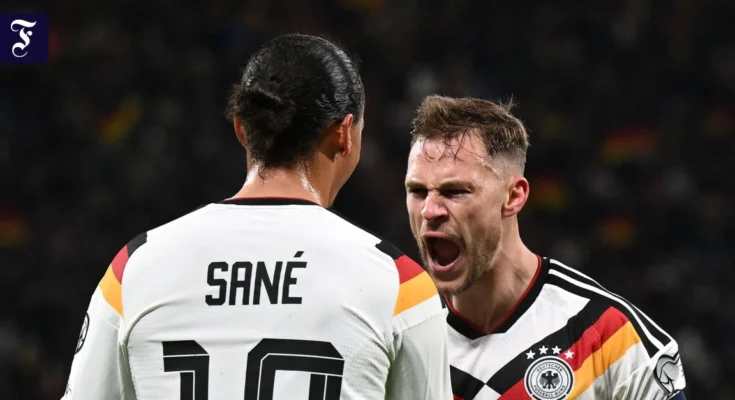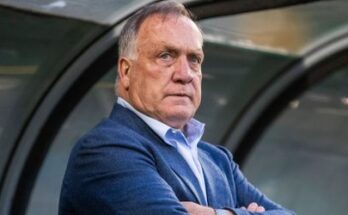What’s special about the 2026 World Cup?
For the first time, 48 teams played instead of 32, and for the first time there were three host countries: the United States, Canada, and Mexico. The tournament begins on June 11 and ends after 39 days with 104 games – 64 games so far – with the final on July 19 near New York. Initially there were twelve groups with four teams each. The first two teams in each group and the eight best third-place teams will advance. Then there is a knockout round from the round of 16 to the final.
Which countries are eligible?
Through the confederation qualifiers, 42 of the 48 places have now been awarded to: Australia, Iran, Japan, Jordan, Qatar, Saudi Arabia, South Korea, Uzbekistan (Asia, eight permanent places), Egypt, Algeria, Ivory Coast, Ghana, Cape Verde, Morocco, Senegal, South Africa, Tunisia (Africa, nine), Panama, Curaçao, Haiti (North and Central America with the Caribbean, three), Argentina, Brazil, Ecuador, Colombia, Paraguay, Uruguay (South America, six), New Zealand (Oceania, one) and Germany, England, France, Croatia, Netherlands, Norway, Portugal, Spain, Belgium, Austria, Scotland and Switzerland (Europe, twelve).
There are also three co-hosts the US, Canada and Mexico. This is the first World Cup participation for Curaçao, Jordan, Uzbekistan and Cape Verde.
What about six open spots?
They will only be awarded the play-off round at the end of March 2026. There are European tournaments (four places) and intercontinental tournaments (two). Who will play against whom will be decided this Thursday at the FIFA world association in Zurich. Starting at 1 p.m. CET, the intercontinental play-off round will be drawn first, then the European round.
In Europe, teams from Pot 1 (Italy, Denmark, Turkey, Ukraine) have home advantage against teams from Pot 4 (Romania, Sweden, North Macedonia, Northern Ireland) in semifinals without a second leg. For each of the four semi-finals, another will be drawn with a team from the top 2 (Poland, Wales, Czech Republic, Slovakia) playing a home game against one from pot 3 (Ireland, Albania, Bosnia-Hercegovina, Kosovo). All semifinals will take place on March 26. The winner of one lane plays in a non-return final for a World Cup spot (March 31). The home team will be drawn via lottery.
In the intercontinental play-off tournament, the Democratic Republic of Congo and Iraq are the teams with the best positions in the current world rankings and each is preparing for the final match to compete for the last two World Cup tickets. Four unseeded teams from Bolivia, Jamaica, New Caledonia and Suriname will play in the semifinals. Here too, there are no return matches between March 23 and 31. All matches took place in Mexico.
When will the World Cup finals groups be determined?
The drawing will take place on Friday, December 5, in Washington, DC, the US capital, starting at 12:00. local time, 18:00. CET, at the John F. Kennedy Center for the Performing Arts – before the final playoff spots are awarded. Therefore there is a wildcard in the draw pot. FIFA will soon announce which procedures will be used.
What does that mean for the German team?
By beating Slovakia 6-0, Germany not only secured a place in the World Cup, but also rose to ninth place in the world at the moment. This means that Julian Nagelsmann’s team will be in Pot 1, in which the group leaders will be drawn which includes the seeded co-hosts (Mexico in Group A, Canada in Group B, United States in Group D). This means that Germany will avoid Argentina, Spain, France, Brazil, England, Belgium, the Netherlands and Portugal as well as the co-hosts, at least in the preliminary round.
Where and when will the World Cup be played?
There are 16 venues, the most in the US (eleven, 78 games), plus three in Mexico (13 games) and two in Canada (13 games). Mexico hosted the World Cup in 1970 and 1986, and the United States in 1994. This was a first for Canada. The cities are divided into three regions: Los Angeles, San Francisco, Seattle, Vancouver (west), Dallas, Guadalajara, Houston, Kansas City, Mexico City, Monterrey (center), Atlanta, Boston, Miami, New York/New Jersey, Philadelphia and Toronto (east). This is intended to reduce travel distances.
The time difference to CEST is between minus six and minus nine hours. Kick-off time is not fixed. There was debate over whether the match would start later because of the hot weather. This means that some matches take place on European nights. A game plan is a rough framework. The tournament begins on Thursday, June 11, with the opening game featuring Mexico at Aztec Stadium in Mexico City. All known dates can be found in the game plan.
What is Germany’s schedule?
By qualifying directly, Germany avoided some uncertainty. After the draw on December 5, they know the groups, match locations and days and first opponents, in addition to wildcards – as in 2022, when Costa Rica qualified for Germany’s group via the play-offs.
One of the two test match opponents in the spring is certain: On Monday, March 30 (20:45 on the FAZ live ticker for international matches), Germany will meet Ivory Coast in Stuttgart if the two teams are not drawn in the same World Cup group. On Sunday, May 31 (20:45 on the FAZ live ticker for international matches), Germany will play Finland in Mainz. The World Cup preparation program and quarter selections will be published by the German Football Association (DFB) after the draw.
What about tickets?
Two sales phases have ended. The third begins after the draw on December 5 via the FIFA.com/tickets website. A resale platform has been set up there for eligible cardholders. The DFB will also receive contingents. The details are not yet known. There will be no tickets at the stadium counter. In addition to seat tickets which are subject to a dynamic pricing model, supporters can also purchase stadium parking spaces which are sometimes difficult to reach by public transport.
And who will be world champion in 2026?
Unfortunately, we don’t know yet either.



